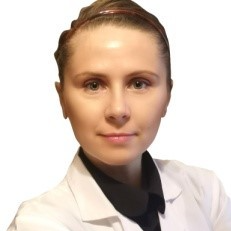Applications of Photoacoustic Spectroscopy
A special issue of Molecules (ISSN 1420-3049). This special issue belongs to the section "Physical Chemistry".
Deadline for manuscript submissions: closed (31 July 2020) | Viewed by 35418
Special Issue Editors
Interests: laser physics and applications; photoacoustic spectroscopy sensing; optical spectroscopy; laser photoacoustic spectroscopy device development; oxidative stress and biomarkers; analysis of gases
Special Issues, Collections and Topics in MDPI journals
Interests: photoacoustic spectroscopy sensing; laser photoacoustic spectroscopy device development gases analysis; biomarkers; oxidative stress; laser–soft tissue interaction; numerical simulation of temperature distribution in tissue
Special Issues, Collections and Topics in MDPI journals
Interests: biophotonics; technology of lasers; photoacoustic spectroscopy; laser–matter interactions; medical applications of lasers; applications of CO2 lasers in life sciences and environment
Special Issues, Collections and Topics in MDPI journals
Special Issue Information
Dear Colleagues,
Photoacoustic (optical) spectroscopy is one of the most exciting areas of research in physics and chemistry, covering a broad range of applications from agricultural to biological, including atmospheric monitoring, space science, and air-quality measurements to security and workplace surveillance, in addition to its great potential in preclinical and clinical biomedical applications.Based on the photoacoustic effect (optoacoustic effect), photoacoustic spectroscopy uses both light and sound, and is based on the acoustic waves produced from materials which are exposed to light to measure its concentration. Photoacoustic spectroscopy is unique in that it combines heat measurements with optical microscopy.
This Special Issue plans to showcase a collection of high-quality research articles focused on new developments in optical technologies for the study of photoacoustic spectroscopy applications, though they may also address the fundamentals and methodology of these methods.
Researchers are welcome to contribute in all areas of spectroscopy including, but not limited to:
- UV/Vis–IR–THz spectroscopy;
- Molecular spectroscopy;
- Laser spectroscopy;
- Novel detectors;
- Spectroscopy in biology and medicine;
- Spectroscopy of solids, gases, and plasmas;
- Optical and laser photoacoustic spectroscopic measurements;
- Atomic spectroscopy;
- Sources and delivery methods for excitation light
- Mathematical analysis of multi-component spectra;
- Algorithms for spectral analyses of multi-component mixtures.
Dr. Cristina Achim
Dr. Mioara Bercu
Dr. Ana Bratu
Guest Editors
Manuscript Submission Information
Manuscripts should be submitted online at www.mdpi.com by registering and logging in to this website. Once you are registered, click here to go to the submission form. Manuscripts can be submitted until the deadline. All submissions that pass pre-check are peer-reviewed. Accepted papers will be published continuously in the journal (as soon as accepted) and will be listed together on the special issue website. Research articles, review articles as well as short communications are invited. For planned papers, a title and short abstract (about 100 words) can be sent to the Editorial Office for announcement on this website.
Submitted manuscripts should not have been published previously, nor be under consideration for publication elsewhere (except conference proceedings papers). All manuscripts are thoroughly refereed through a single-blind peer-review process. A guide for authors and other relevant information for submission of manuscripts is available on the Instructions for Authors page. Molecules is an international peer-reviewed open access semimonthly journal published by MDPI.
Please visit the Instructions for Authors page before submitting a manuscript. The Article Processing Charge (APC) for publication in this open access journal is 2700 CHF (Swiss Francs). Submitted papers should be well formatted and use good English. Authors may use MDPI's English editing service prior to publication or during author revisions.
Keywords
- Photoacoustics
- optoacoustics
- spectroscopy
- UV/Vis–IR–THz spectroscopy
- biophotonics
- laser modulation
- absorption spectra
- laser technology








